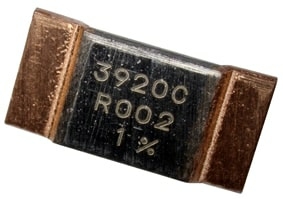source: TDK news
High power, low value SMT shunt resistors key to monitoring and reducing energy usage.
TT Electronics today launched the LRMAP3920 series of high reliability, low value SMT shunt resistors for current sensing duties. With values down to 200μΩ and a power rating of 5W on FR4 fibreglass circuit boards, the maximum measurable current is over 150A, and in most cases is restricted only by the current handling of the PCB tracks. An even higher 10W power rating may be achieved for assemblies on thermal substrates such as DBC (direct bonded copper) ceramic or IMS (insulated metal substrate), making these parts ideal for power hybrid modules.
Aimed at designers of power supplies and motor drives in the industrial, automotive and medical industries, metal alloy resistors are ideal in the specific areas of regulating current flow, detecting stalled motors, and more importantly measuring power consumption. The growth of electrical drives and actuators in industrial and automotive applications has seen a parallel growth in the need to monitor and minimise energy usage. The LRMAP3920 is AEC-Q200 qualified for the automotive market while other applications include power supplies, battery monitoring and process control.
By offering AEC-Q200 qualification, TT Electronics provides the assured reliability of a true automotive grade component. With their very low values, the LRMAP3920 resistors minimise the energy wastage normally associated with including a series resistor in the high current circuit. Additionally, the parts’ low thermal impedance minimises heating of the resistor itself, which in turn further improves reliability. Offering high reliability under inrush and momentary short circuit conditions the LRMAP3920 resistors feature a high energy-surge capability up to 14J.
TT Electronics LRMAP3920 resistors offer higher power ratings in some values thus giving design engineers greater freedom and scope in their designs. The resistors’ typical load life stability of ±0.5 percent, together with TCRs down to ±50ppm/°C and thermal EMFs less than 2μV/°C, result in only a small part of the designer’s ‘error budget’ being consumed, enabling more design freedom elsewhere in the circuit.
The resistors are manufactured using the latest bulk metal technology with e-beam welded copper terminations to deliver very low surface temperatures and excellent surge energy performance. In short, TT Electronics’ LRMAP3920 offers high stability, accurate current sensing of AC and DC currents up to 150A in a compact, surface mount format.































